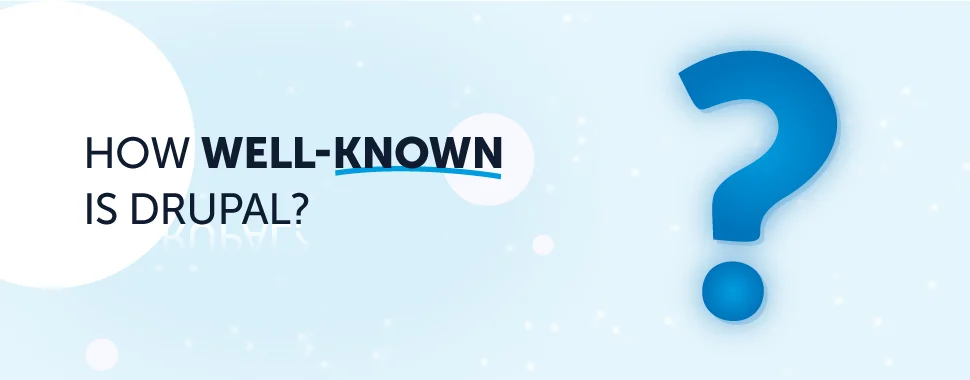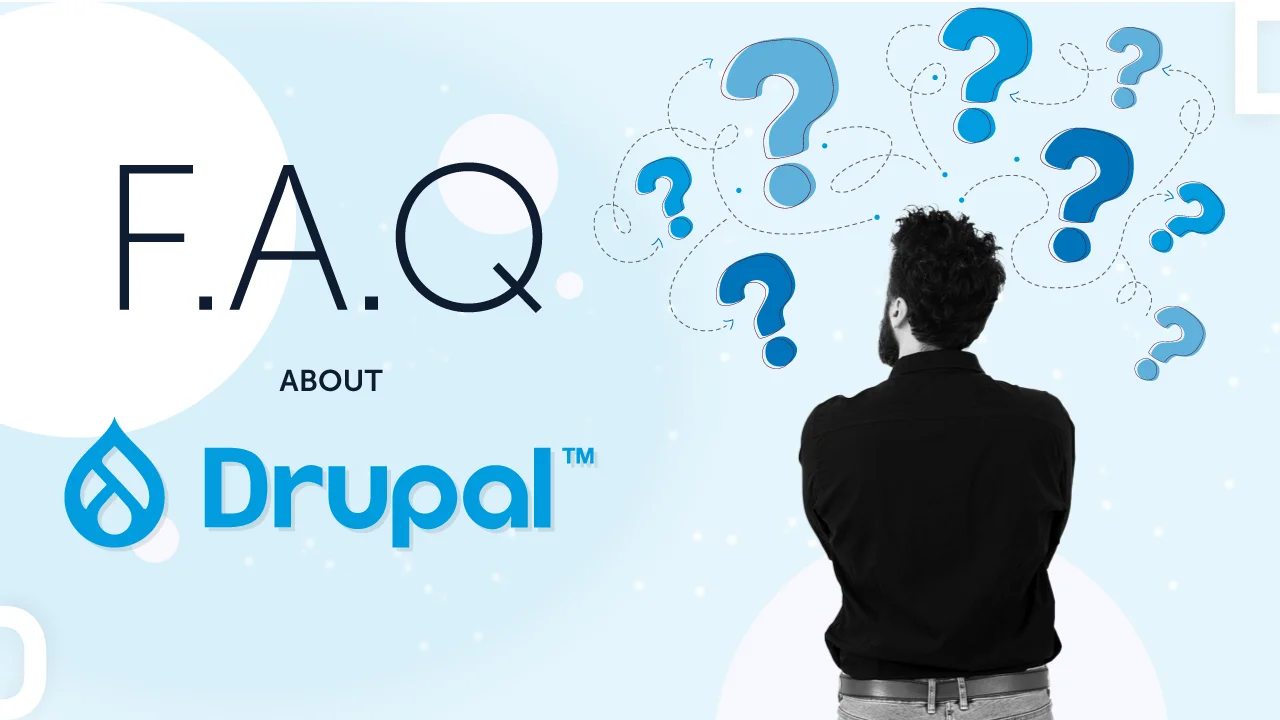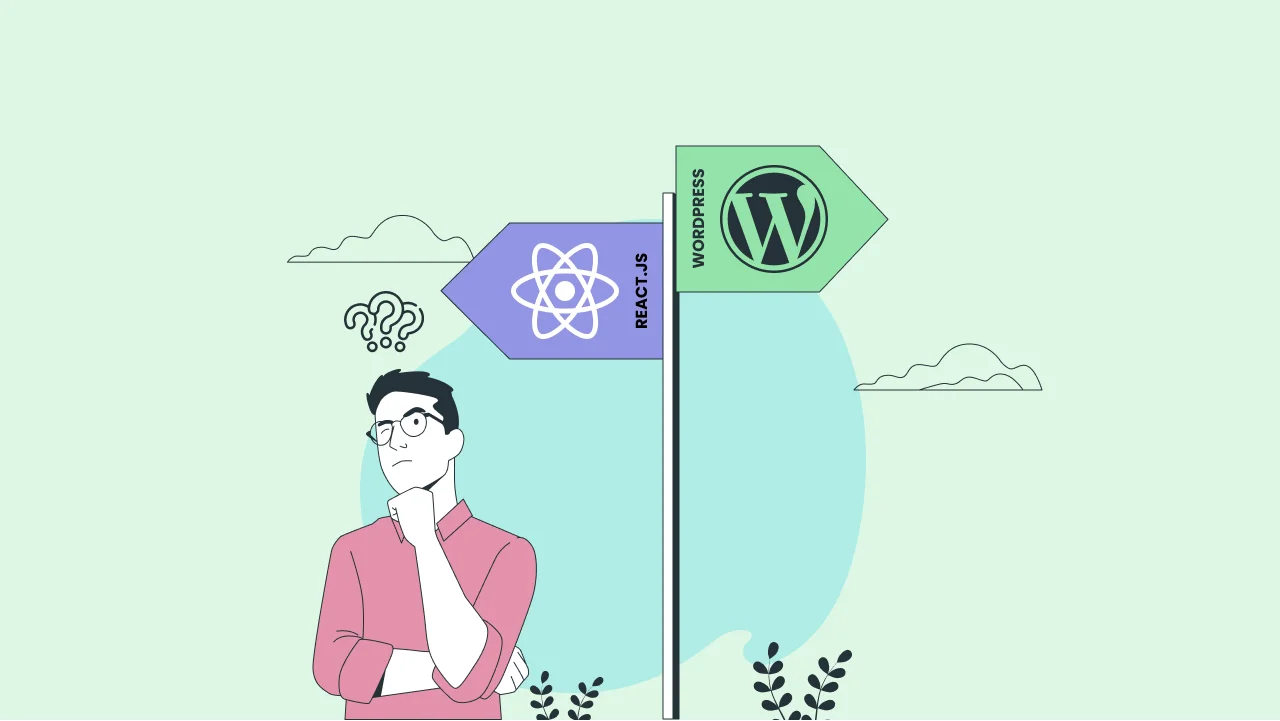Q. 1 What is Drupal?
A1. Drupal is a business’s superpower, making it simple for them to design and manage content on their websites and applications. At its core, Drupal operates as a open-source Content Management System (CMS): it’s pivotal in digital content creation; customization and efficient management. Characterized by accessibility and a collaborative development model due to its open-source nature, Drupal permits an international community of developers to contribute towards continual enhancement.
Q.2 What is Drupal’s Goal and Purpose

Versatility for Various Websites
Deliberately not steering clear of a one-size-fits-all approach for different types of websites, Drupal earns recognition for its robustness and adaptability while creating large websites.
The objective it pursues transcends mere problem-solving; instead, Drupal presents an elastic solution meticulously tailored to accommodate diverse online experiences:all the way up to enterprise systems and sites.
Fast Adaptability As the digital scene evolves, websites need to swiftly adjust. Drupal’s modular architecture enables rapid and effective incorporation of updates, new features, and modifications. Particularly for companies and groups aspiring to remain at technology’s cutting edge, this swift adaptation holds paramount importance.
Website for Enterprises
Companies use Drupal’s modular design to create complex, feature-rich websites that faithfully represent their enterprises; in fact, these businesses gain a lot from using Drupal. Because of the modules’ and the capabilities’ versatility in integration, they can include necessary components like contact forms, multimedia content, and even product catalogs.
Scalability for Expanding Needs
The major factor driving Drupal’s popularity for a wide array of web projects is its inherent scalability. Regardless of the initial form – a basic blog or sophisticated business application – Drupal expands with each project. Its scalability aligns it as an investment within a long-term digital strategy.
Q. 3 How does drupal work?
A3. Drupal is a web application framework and content management system (CMS) that makes it simple for users to create, manage, and arrange digital information. Drupal’s modular and adaptable core architecture is based on PHP and interacts with a database (usually MySQL or PostgreSQL). This is a condensed explanation of how Drupal functions:
Modules
Modules allow you to enhance the functionality of Drupal. These might be contributed modules created by the community or core modules included with Drupal. Certain aspects, such user authentication, content kinds, and SEO, are managed via modules.
Themes
Drupal’s presentation layer is managed by themes. Drupal themes specify how content is displayed on a site and define its overall style. To alter the look of their websites, users can create or select themes.
Content Types and Nodes
Drupal arranges content into nodes, which stand in for discrete content units. Content types specify fields and parameters and establish the structure of nodes. One content type that might have fields for the title, body, and author is an article.
Taxonomy
Taxonomy is used by Drupal to tag and organize information. Taxonomy facilitates content organization and establishes connections between various informational elements.
User Management
A powerful user management system is built into Drupal. Users can have fine-grained control over who can do what on the site by being allocated distinct roles with specified permissions.
Events and Hooks
Developers can work with and expand the functionality of the core system or contributed modules in Drupal thanks to the hook mechanism. Custom code can react to particular actions or system changes thanks to events and triggers.
Q4.What is Drupal Development Services?
A4. Thanks to the team’s extensive experience in Drupal development, cmsMinds is able to provide a wide range of services related to this platform. This includes, among other things, the development of custom modules, theme design, which is essential for improving the user experience and aesthetics of the website, and optimization services to increase the performance efficiency of your website. Our staff can customize these services to fit any particular need you may have, whether it involves making changes to an already-existing Drupal website or developing a whole new one.
Q5. How Well-Known Is Drupal?

A5: Drupal has a large market share and widespread appeal thanks to its rich feature set and active global community. Here at cmsMinds, your go-to Drupal experts, we understand how popular the platform is becoming, therefore we always use the newest advancements to give our clients state-of-the-art solutions.
Q.6 How much does Drupal cost?
A6. The core software of the open-source platform Drupal is available for free. It is important to remember, though, that additional fees might be incurred for personalized modules and themes in addition to professional help. Drupal’s versatility allows businesses to customize their investment based on the demands and goals of individual projects.
Q7: What programming language is Drupal?
A7: Primarily utilized in Drupal development, PHP stands as an esteemed server-side programming language. With our proficient command over PHP, the cmsMinds development team crafts scalable and reliable solutions tailored to your distinct requirements.
Q8: Is Drupal Free?
A8: Drupal is an open-source platform that provides its core software for free; nevertheless, even if the fundamental program is free, there may be additional costs for hosting, customisation, and support services. At cmsMinds, we place a high value on working collaboratively with our clients to match project objectives to their financial commitments. In addition, we always offer transparent pricing structures at every level of the engagement.
The particular hosting needs of a Drupal website must be taken into account when determining hosting costs. These include things like server resources, bandwidth requirements, and any other things that are necessary for optimal performance. There are two well-known solutions for Drupal hosting: Pantheon and Acquia. Platform-as-a-service (PaaS) provider Pantheon provides development tools designed exclusively for Drupal and WordPress, including testing and scaling services.
However, Acquia takes the lead as a cloud-based platform that specializes in hosting websites built with Drupal. With different features, costs, and support choices offered by Pantheon and Acquia, consumers have the freedom to choose the hosting option that best suits the needs of their Drupal website. These services include everything from ensuring smooth operation to offering crucial assistance: hosting, security protocols, and general site upkeep are just a few of the many service arrangements made to ensure peak performance.
Q9: How Can I Pick a Partner for Drupal?

A9. In addition to reviewing a Drupal partner’s education and expertise, it’s critical to consider their track record of accomplishment. Client recommendations, previously finished projects, and adherence to best practices should all be taken into account during this inspection. You should not disregard these data as they are quite helpful in assisting you in making an informed decision.
Q10. What Is Drupal’s Security Level?
A10. Drupal prioritizes security, actively addressing any vulnerabilities with frequent upgrades and a committed security team. Users must unquestionably absolutely abide by recommended measures in order to ensure their safety when using the internet. Drupal clients can be assured of a dependable and safe Drupal experience from cmsMinds because of our unwavering adherence to the most comprehensive security processes in the industry.
Q11. Does drupal enable search engine friendly urls?
A11. Indeed, Drupal facilitates the creation of URLs that are optimized for search engines. It does this by enabling users to create unique URL paths for content using its integrated Path module. Users and search engines alike gain from this feature, which makes it easier to create meaningful and readable URLs. Drupal additionally facilitates the configuration of clean URLs, the removal of unnecessary query strings, and the optimization of URL structure for enhanced search engine exposure.
Q12.How many websites use drupal?
A 12. Currently, Drupal is used by about 1.7 million websites. Drupal is majorly used in larger websites, such as those run by governments, big businesses, educational institutions, and non-profits website design, Drupal stands out for its robustness and flexibility.
Q13. How hard is drupal to learn?
A13. One’s background, level of familiarity with content management systems, and the project’s complexity are some of the factors that influence how easy it is to learn Drupal. Drupal is more difficult to use than some other CMS platforms because of its adaptability and extensive feature set. Conversely, learning can be considerably aided by the availability of online resources, community support, and documentation. It could be helpful for beginners to start with the basics of Drupal before moving on to more advanced topics.
Q14. How does drupal weight function?
A14. Drupal uses the concept of weight to regulate the order in which things are shown. For instance, each thing has a weight when it is listed on a page, whether it be blocks or menu items. Lower weight items show up first. Drupal uses this technique to decide which elements appear first and gives users the ability to change the display order via administrative interfaces.
Q. 15 How old is drupal?
A15. January 15, 2001
Q. 16 What is History of drupal?

The history of Drupal, an open-source web content management system (CMS) with strength and versatility, is extensive. It all started in Antwerp, Belgium, in the year 2000 when Hans Snijder and Dries Buytaert, two students at the University of Antwerp, encountered a similar problem: there weren’t many dependable internet connections available to students.
They cleverly installed a wireless bridge between their rooms to solve this, dividing an ADSL modem connection among the eight students. They sensed that a space for communication was lacking despite connectivity.
Dries Buytaert enters. He used the opportunity presented by this missing functionality to create a modest news website featuring a web board. He may exchange fascinating news, talk about dinner plans, publish notes on their network state, and much more here with his buddies. In essence, they had created a crude structure for content. The software they created was first unnamed.
But when Dries moved out of his dorm after graduation, they needed a method to stay in touch. Thus, they made the decision to launch their internal website. In his quest for the ideal domain name, Dries gave “dorp.org” some thought. The word “village,” which is how the Dutch word “dorp” is translated, sums up the small community they had established. But here’s where serendipity entered the picture: Dries typed “drop” instead of “dorp” by mistake. The error persisted, leading to the creation of drop.org.
Drop.org’s online audience grew as soon as it went live. Discussions centered on cutting edge web technology such as rating, syndication, distributed authentication, moderation, and new users joining. Drop.org gradually transformed into a space for individual exploration driven by a constant stream of ideas. These concepts were implemented as features and procedures in the site’s hosting software.
Dries took a crucial choice on January 15, 2001. He made the drop.org software publicly available so that others might utilize and develop this testing ground. And thus, Drupal came to be. It is pronounced “droo-puhl,” which is the English equivalent of the Dutch word “druppel,” which means “drop.”
Ever since, Drupal’s growth has been exponential, drawing in a thriving community of fans, designers, and developers. Its trajectory has been characterized by constant innovation, innumerable contributions, and a dedication to influencing online development going forward.



